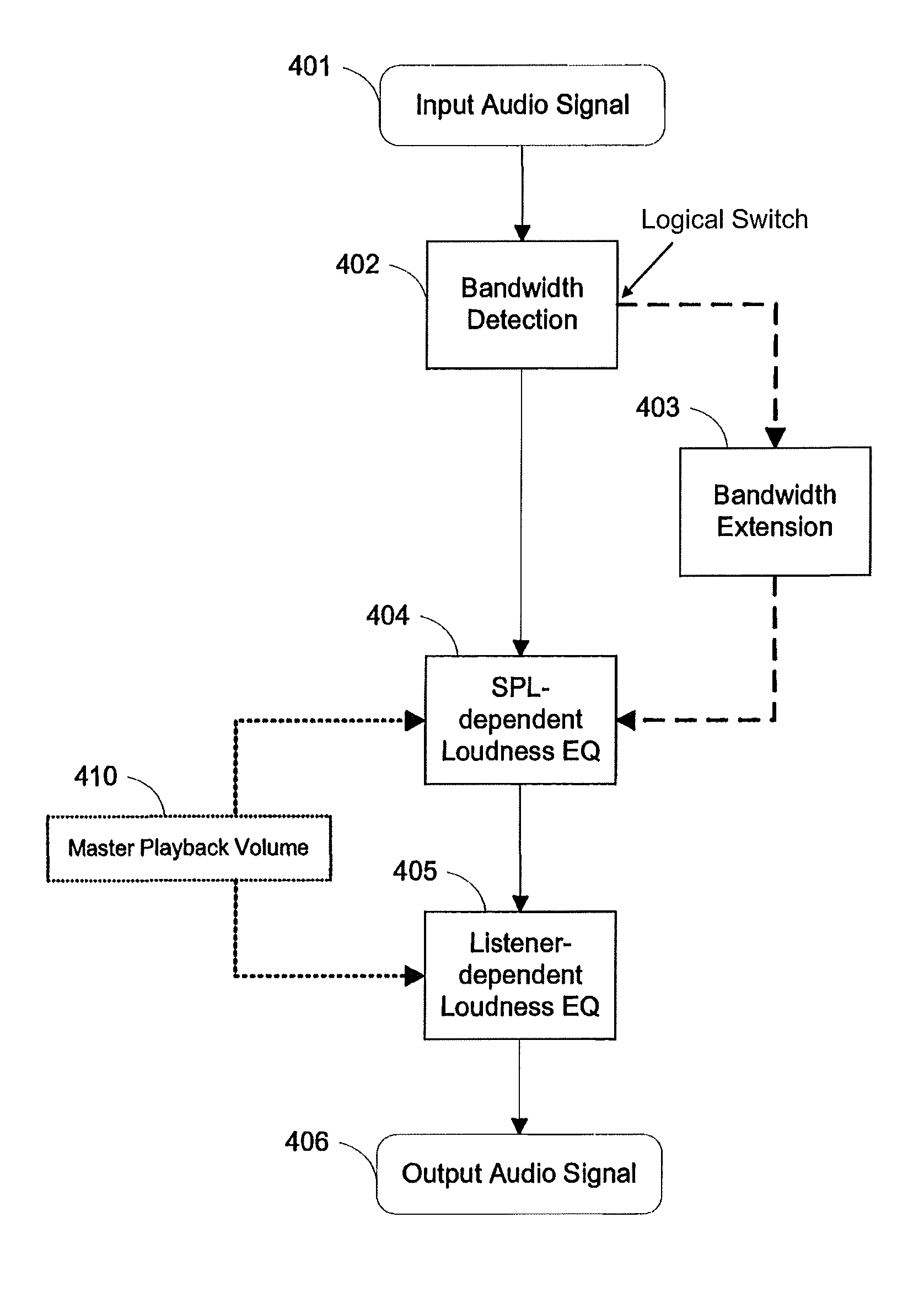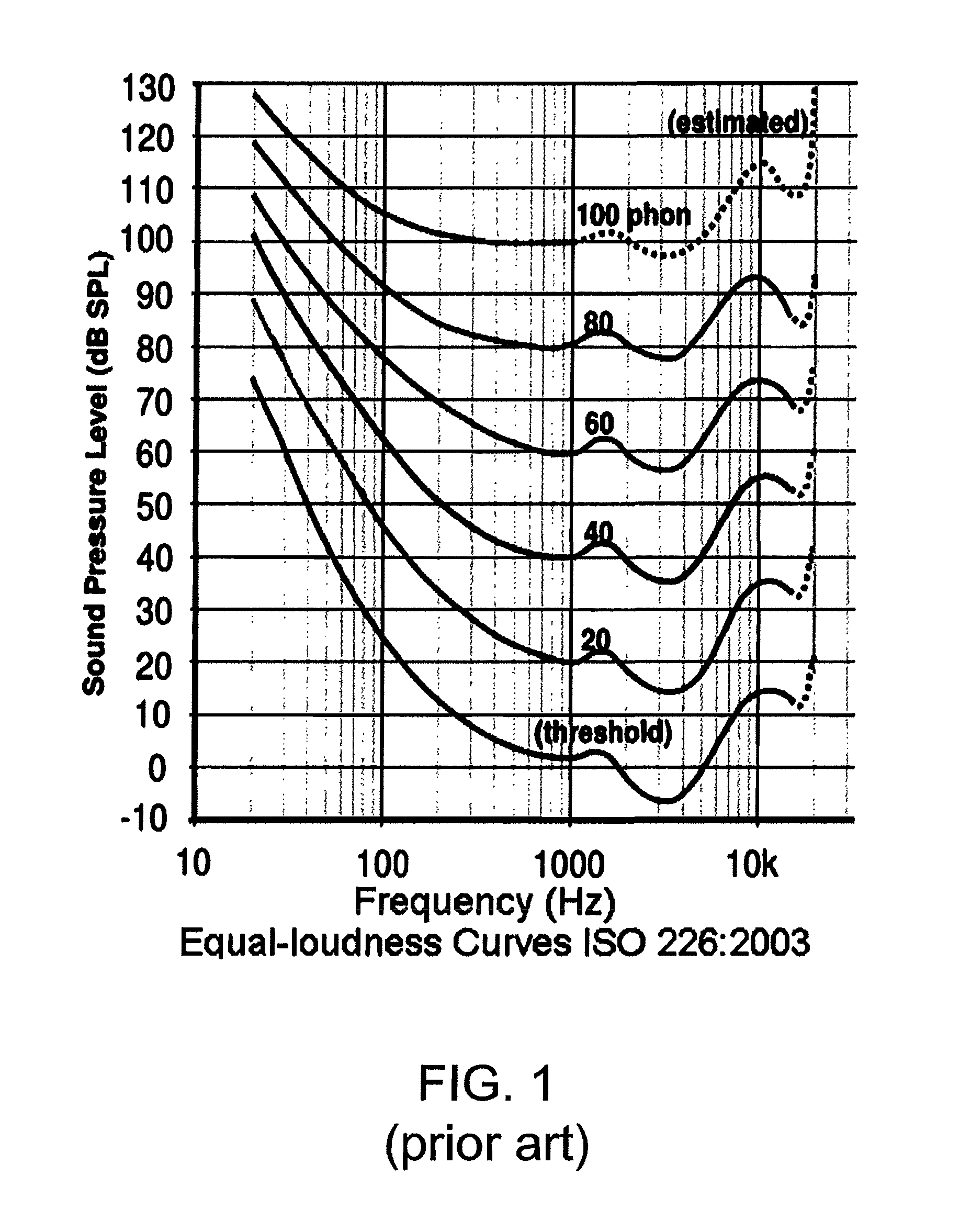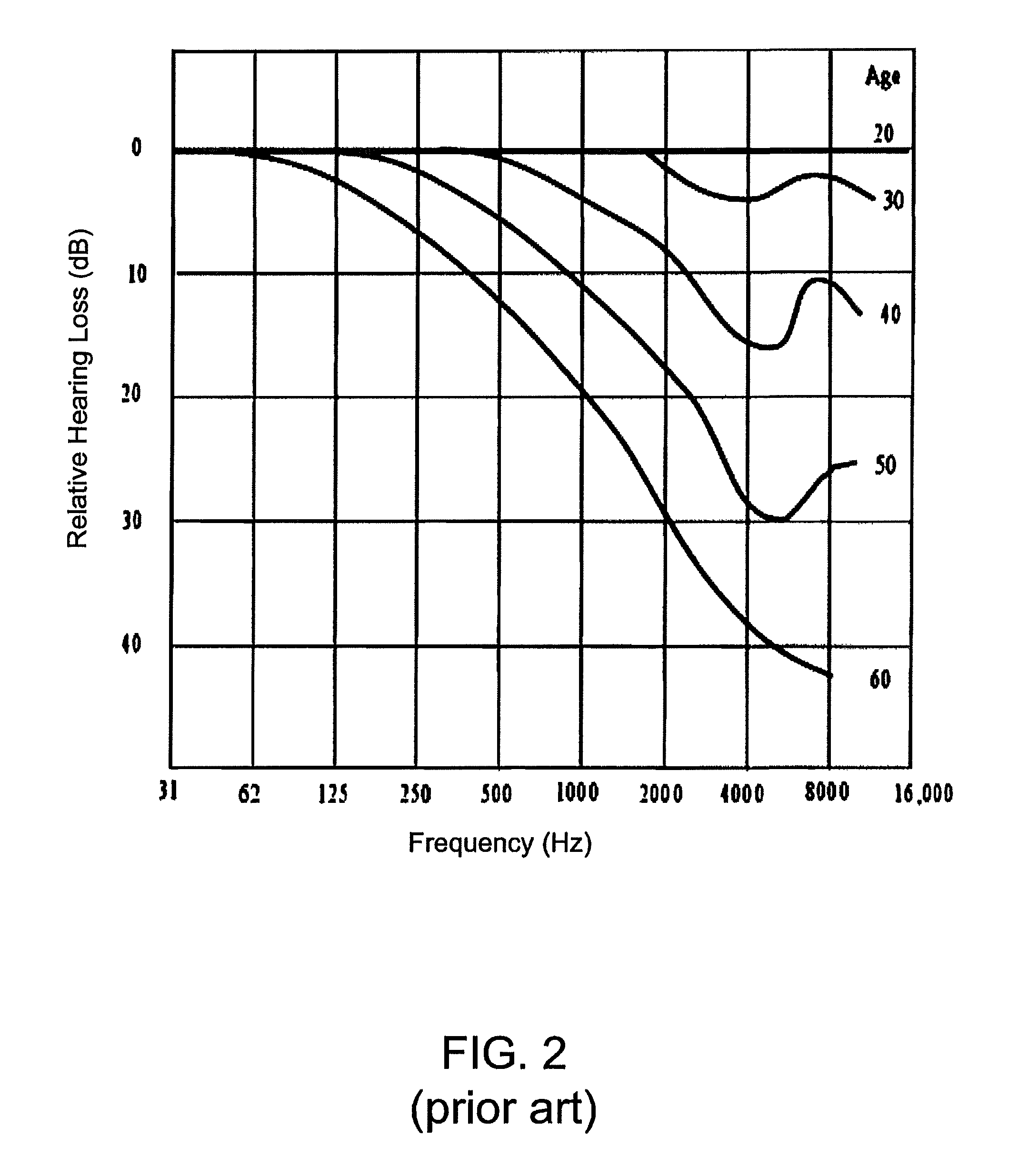Dynamic compensation of audio signals for improved perceived spectral imbalances
a dynamic compensation and audio signal technology, applied in the field of equalizing audio signals, can solve the problems of significant changes in the sound pressure level, high age-dependent, and especially problematic presbycusis, and achieve excellent listening acuity
- Summary
- Abstract
- Description
- Claims
- Application Information
AI Technical Summary
Benefits of technology
Problems solved by technology
Method used
Image
Examples
first embodiment
[0019]Therefore, in the invention there is provided a method of equalizing an audio signal within a processing device. The method includes, in a first process, dividing frequency coefficients of a portion of the audio signal into a plurality of sub-bands, wherein each sub-band includes one or more frequency coefficients. The method includes, for one or more of the plurality of sub-bands, using the processing device to perform a series of processes. First, the processing device determines at least one mastering signal magnitude based in part upon (i) a pre-determined mastering sound pressure level and (ii) the frequency coefficients of the one or more sub-bands. Then, the processing device determines at least one playback signal magnitude based in part upon a master volume level of a playback device. Next, the processing device generates first equal loudness curve data based upon the mastering signal magnitude. Then the processing device generates second equal loudness curve data bas...
second embodiment
[0023]There is also provided in a second embodiment a method for equalization of an audio signal for playback on a playback device. This method includes dividing the audio signal into a plurality of sub-bands containing one or more frequency coefficients, as before. The second method further requires dynamically adapting the frequency coefficients of one or more sub-bands based upon a mastering sound pressure level and a playback level for the playback device. Next, the method calls for adapting the frequency coefficients of one or more of the plurality of sub-bands based upon hearing loss data for a listener. Finally, the method requires transforming the adapted frequency coefficients into an equalized audio signal for playback on the playback device. In accordance with this method, the dynamic adaptation and adaptation for hearing loss results in an individualized and dynamically equalized audio signal approximating the spectral balance of the audio signal when mastered. Presumabl...
PUM
 Login to View More
Login to View More Abstract
Description
Claims
Application Information
 Login to View More
Login to View More - R&D
- Intellectual Property
- Life Sciences
- Materials
- Tech Scout
- Unparalleled Data Quality
- Higher Quality Content
- 60% Fewer Hallucinations
Browse by: Latest US Patents, China's latest patents, Technical Efficacy Thesaurus, Application Domain, Technology Topic, Popular Technical Reports.
© 2025 PatSnap. All rights reserved.Legal|Privacy policy|Modern Slavery Act Transparency Statement|Sitemap|About US| Contact US: help@patsnap.com



